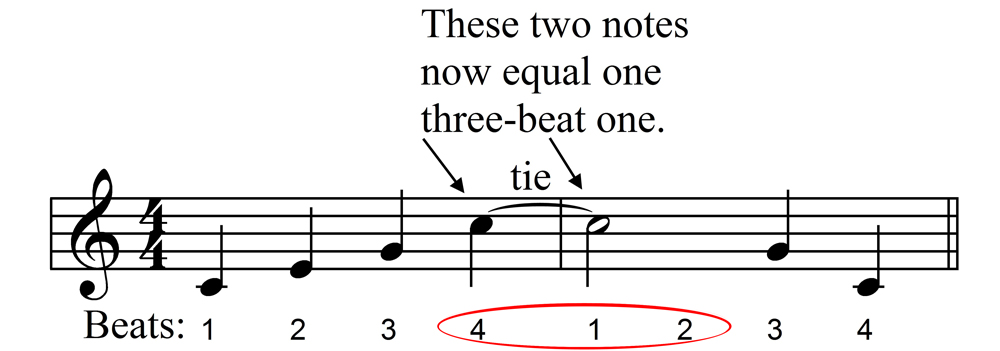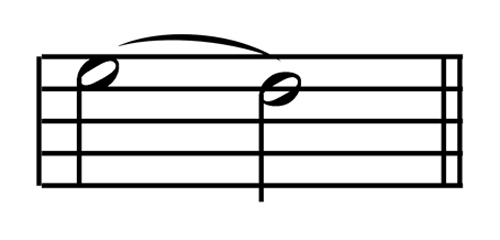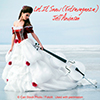Ties Versus Slurs: What's the Difference?
OK, put your music theory thinking hat on and look at the following two examples. Which one is a tie and which one is a slur?

If you said that the example on the left is a tie, congratulations! You get the gold star! It is a tie because the curvy line connects two notes that are on the same space. (Ties also connect notes that are on the same line.) However, the example on the right is a slur because the notes are on different lines and spaces.
"So what?", you might ask. And the answer would be, "A lot!" Although ties and slurs look alike, they are quite different. (Leave it up to the history of music theory to make something that looks so similar mean something quite different.) Let's find out what makes a tie a tie and a slur a slur.
Ties
Ties connect two or more notes that are on the same line or space. When notes are connected in this way they are combined into one longer note. This means that you do not articulate the second note by plucking, striking, tonguing, bowing, or any other way in which a musical note is initiated. Let's listen to how this sounds. (Click to play the audio file below the following example of tied notes.)

Notice that even though you see two notes, the curvy line connects them so that they form one longer note equal to the length of the first note plus the second one. In this example, a half note (normally worth two beats) is connected to a second half note (also normally worth two beats), forming a longer note equal to - you guessed it - 2 + 2 = 4 beats! Two notes are morphed into one longer-sounding one. (Wouldn't it be cool if we could do this with non-musical things - like making two normal-sized swimming pools into one big one! But, alas! This only works with music.)
CONFUSING FACT: The curvy line is called a "tie" when it functions as a tie, and a "slur" when it functions as a slur. Even though it looks almost exactly the same in either case, it has two different names. (To make things even more confusing, a curvy line can also function as a phrase mark, but we're not going to go there!) Now doesn't that make you want to quit your day job and get an advanced degree in music theory?! Foolish me, I actually have an advanced degree in music theory. I should have stuck with my day job. ;-)
You might ask why we would ever need to tie two notes together. There are three common uses of ties. One, to tie notes that are in different measures, two, to connect notes into lengths that are otherwise not possible, and three, to create notes that have longer lengths than are possible with ordinary notes.
Here is an example of notes in different measures that are tied together. You can watch a movie of it too (found below).

Slurs
Notes that are not on the same line or space, and are connected with a curvy line called a "slur", are slurred notes. Slurred notes are individually articulated (plucked, bowed, tongued, etc) but are played smoothly, without separation (no silence between them). They are sometimes articulated using specialized techniques, such as in the case of the guitar: hammer-ons, pull-offs, and slides. Listen to the following slurred notes. (Notice that they are not on the same line or space.)

To summarize, here is the difference between ties and slurs:
- Ties connect notes that are on the same line or space. Only the first note is articulated.
- Slurs connect notes that are NOT on the same line or space. Each note is articulated.
I hope this article helps you understand the difference between ties and slurs. (I have purposely left out a special case where notes on the same line or space, connected by a slur, are actually individually articulated. Music theory is confusing enough as it is, so I will consider this exception to the rule at another time.)
Jeff Anvinson, owner/operator of JLA Music
Website and most graphics are created inhouse by Jeff Anvinson, Owner/Operator of JLA Music
Some graphics are purchased from Can Stock Photo, used by permission, and are Copyright
© Can Stock Photo
JLA Music takes care not to infringe on anyone's rights. Please contact us at jla@jlamusic.com if you have questions.
Copyright 2025 © Jeff Anvinson, JLA Music


